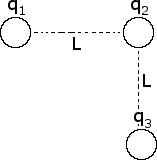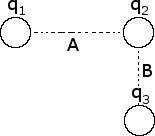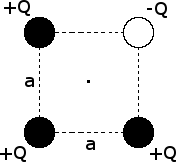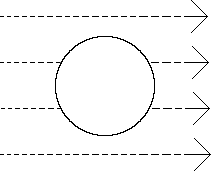Physics 2
A F note has a wavelength of 98.8 cm. Calculate its frequency.
If you are standing 100 m away from the starter at a track meet, how long will it take you to hear the sound from the gun after it is shot?
A person is standing on the south side of a canyon and shouts. She hears the echo in 0.44 seconds. Assuming the sound bounced off the other side of the canyon and came back, how wide is the canyon?
What happens to the wavelength and the frequency of a note as you go up one octave?
A concert A has a frequency of 440 hertz. What is its wavelength, and what is the frequency and wavelength of an A one octave higher?
What is the resonant frequency of sound when you blow across an empty soda bottle that is 15 cm tall?
The soda bottle in the above question is 1/3 full. What is the resonant frequency of sound produced when you blow across it?
An organ pipe is 78 cm long. What is the resonance frequency of sound it produced if it is: A. Open? B. Closed?
A wave travelling on a slinky has a period, T = 0.25 s, and a wavelength, = 0.3 m. Find the frequency and speed of the wave.
A 2 m long string is tied down at one end and held by a person at the other end. The mass of the string is 4 kg. The person pulls the string taut with a tension of 72 N and shakes the string with a frequency of 2 Hz to produce a standing wave. Find the wavelength.
A tube is open on one end and closed on the other. Draw the largest and second largest standing waves.
A tube is open on one end and closed on the other. Find the largest and second largest wavelengths.
Two point charges, q = 6Q and q = -2Q, are separated by a distance, d. The attractive force between these two particles is 20 N. If the distanced is halved, so d = d/2, what is the new force between the particles?
Two metal spheres are charged, q = 6Q and q = -2Q, and are separated by a distance d. The attractive force between these two spheres is 20 N. The metal spheres are then brought together so they are touching, and then separated again a distance d. What is the new charge on the metal spheres and what is the new force between them?
Two objects, whose charges are +3 nC and -2 nC, are separated by 1.0 mm. Find the magnitude of the attractive force that either charge exerts on the other.
In the figure below, L = 1.0 mm, q = +3 nC, q = -2 nC, and q is +4 nC. Find the magnitude and direction of the net electrostatic force on q

In the figure below, A = 3 cm, B = 1 cm, q = +15 nC, q = -5 nC, and q is -10 nC. Find the magnitude and direction of the net electrostatic force on q

What is the direction of the electric field at the center of the square?

A 100 g ball carries a charge of +0.1 C and is placed in an uniform electric field, E = 10 N/C. Find the acceleration of the ball.
An uncharged metal sphere is place in a uniform electric field as shown below. Which way will the sphere be pushed? Explain.
